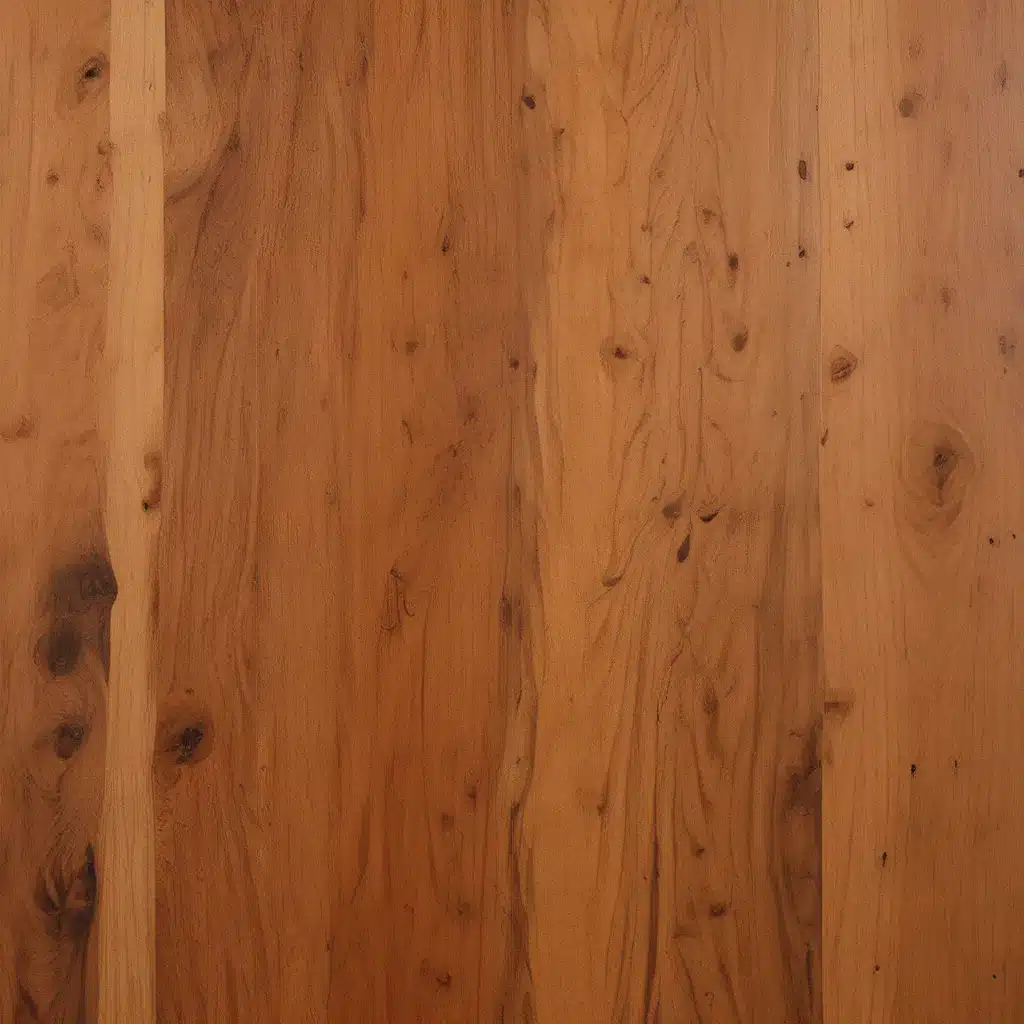
Uncovering the Hidden Gems of the Furniture World
You know the feeling – walking into a room and being instantly captivated by the warm, inviting atmosphere. The rich textures, the intricate grain patterns, the way the light plays across the surface. It’s like the furniture itself is telling a story, drawing you in with its natural beauty.
Well, what if I told you that this allure isn’t just about good design? It’s about the materials themselves – the very wood that forms the foundation of so many of our favorite pieces. And when it comes to sustainable furniture, some of the most fascinating, functional, and downright stunning options come from lesser-known wood species.
Let me explain. The world of wood is vast and varied, extending far beyond the usual suspects like oak, maple, and cherry. In fact, there’s a whole universe of unique timber just waiting to be discovered. From the rich, chocolatey tones of black walnut to the intricate, almost iridescent grain of redheart, these lesser-known woods offer a wealth of untapped potential for furniture makers and designers.
But it’s not just about aesthetics. These alternative wood species also bring a host of practical benefits to the table – pun intended. Many are incredibly durable, resistant to wear and tear, and even naturally water-resistant. And crucially, they often come from responsibly managed forests certified by organizations like the Forest Stewardship Council (FSC) – ensuring that your furniture is not only beautiful, but also sustainable.
The Trouble with Tropical Timber
Now, you might be thinking, “But what about tropical hardwoods? Aren’t those the height of luxury and durability?” And you’d be right – to an extent. Tropical timber like teak, mahogany, and rosewood have long been prized for their exquisite appearance and impressive strength.
The trouble is, the demand for these woods has led to widespread deforestation in regions like the Amazon and Southeast Asia. Entire ecosystems are being stripped bare to feed our appetite for these high-end materials. And the consequences can be devastating, not just for the environment, but for the indigenous communities who call these forests home.
Fortunately, there’s a solution. By shifting our attention to lesser-known wood species – many of which are just as stunning and durable as their tropical counterparts – we can reduce the pressure on endangered forests while still enjoying the natural beauty and functionality that wood has to offer.
Exploring the World of Alternative Woods
So, what exactly are these alternative wood species, and what makes them so special? Let me introduce you to a few of my favorites:
Redheart: Also known as bloodwood, this tropical American tree produces a stunning, reddish-purple timber with an almost iridescent grain pattern. It’s incredibly dense and durable, making it a fantastic choice for furniture, flooring, and even outdoor projects.
Black Walnut: A classic in the world of fine woodworking, black walnut is prized for its rich, chocolate-brown hue and distinctive grain. But did you know that it’s also highly sustainable? Many black walnut forests are carefully managed to ensure a steady supply of this beautiful timber.
Zebrawood: Hailing from Africa, zebrawood gets its name from the striking, contrasting light and dark stripes that run through the grain. It’s a relatively hard and durable wood, perfect for everything from tabletops to intricate inlays.
Wenge: Another African species, wenge is known for its deep, almost black coloration with golden brown highlights. It’s an incredibly dense and stable wood, making it a popular choice for furniture, flooring, and even musical instruments.
The list goes on – from the pale, elegant tones of anigre to the rich, swirling patterns of the aptly named curly maple, the world of alternative woods is a veritable treasure trove of sustainable, high-performance options.
Crafting a Sustainable Future
But it’s not just about the wood itself. The true beauty of these lesser-known species lies in the way they’re sourced and processed. Many are harvested from responsibly managed forests, where the delicate balance of the ecosystem is carefully maintained.
Take the Forest Stewardship Council (FSC), for example. As the leader in sustainable forestry, this organization sets rigorous standards for everything from biodiversity conservation to workers’ rights. FSC-certified wood not only looks stunning, but you can be confident that it’s been harvested with the utmost care and consideration for the environment.
And the benefits of using these sustainable woods extend far beyond the final product. By supporting responsible forestry practices, we’re helping to preserve the world’s precious natural resources for generations to come. It’s a win-win for both the planet and the people who call it home.
Bringing Nature into the Home
But you know what they say – the proof is in the pudding. Or in this case, the furniture. When you bring these lesser-known wood species into your home, the difference is palpable. The warm, inviting textures, the mesmerizing grain patterns, the way the light dances across the surface – it’s like welcoming a little slice of nature into your living space.
And the best part? You can find these sustainable, high-quality woods in all sorts of furniture, from bespoke pieces to ready-to-assemble options. Whether you’re in the market for a stunning new dining table, an heirloom-quality bedroom suite, or even just a one-of-a-kind accent piece, the world of alternative woods has something to offer.
So why settle for the usual suspects when you can embrace the hidden gems of the furniture world? By incorporating these lesser-known, sustainably sourced timber species into your home, you’re not just creating a beautiful space – you’re also making a positive impact on the planet.
It’s time to unlock the true potential of wood and discover the joys of sustainable craftsmanship. Who knows, you might just find your new favorite material in the most unexpected of places.








